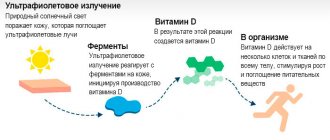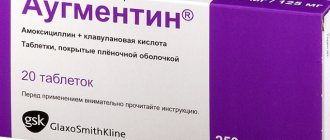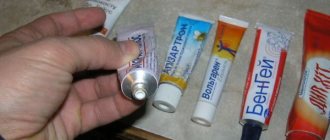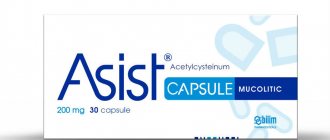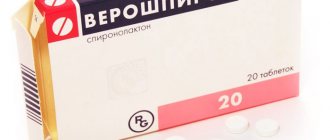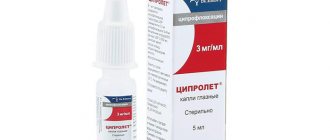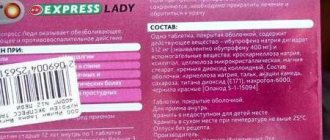1479
Today, one of the most popular over-the-counter drugs is Diclofenac. Tablets, injection solutions, ointments, gels and even suppositories - there are several forms of release of this medicine. All of them are designed to provide anti-inflammatory, antispasmodic, antipyretic and analgesic effects.
Release forms and composition
Diclofenac is produced in the following dosage forms:
- Eye drops 0.1%.
- Film-coated tablets, soluble in the intestine (25 mg, 50 mg, extended-release 100 mg).
- Suppositories 50 mg and 100 mg.
- In ampoules, injections, solution for intramuscular administration 25 mg/ml
- Gel for external use 1% or 5%.
- Ointment for external use 1% or 2%.
The composition of 1 enteric-coated tablet includes: active substance - diclofenac sodium - 25 mg and auxiliary components.
1 ml of solution for intramuscular administration contains diclofenac sodium - 25 mg;
1 g of ointment for external use contains diclofenac sodium - 10 mg and auxiliary components: polyethylene oxide-400, polyethylene oxide-1500, dimexide, 1,2-propylene glycol.
The composition of 1 g of gel for external use includes: diclofenac sodium - 10 or 50 mg.
Diclofenac suppository contains diclofenac sodium – 100 mg;
The composition of 1 ml of eye drops includes: active substance - 1 mg and hydrochloric acid (1M solution), macrogol glyceryl ricinoleate (polyethoxylated castor oil), disodium edetate dihydrate, trometamol, benzalkonium chloride, mannitol, purified water.
Pharmacological properties
The active ingredient diclofenac sodium inhibits cyclooxygenase, which disrupts the metabolism of arachidonic acid, while reducing the amount of prostaglandins at the site of inflammation. After administration, the drug is completely resorbed, the maximum plasma concentration occurs 1-2 hours after use and remains quite high for a long time.
The use of Diclofenac is most effective in the treatment of rheumatic diseases. Penetrates well into all body fluids, 65% of the substance is metabolized in the liver and excreted from the body by the urinary system, 35% is excreted in feces in the form of metabolites. In terms of anti-inflammatory effect and tolerability, it is many times superior to indomethacin.
Diclofenac tablets, the instructions for use confirm this, relieve joint pain during movement and at rest, reduce swelling of the joints and eliminate morning stiffness, increase the range of motion in the affected joints.
Diclofenac injections are indicated for the initial stage of development of diseases with severe pain. A lasting therapeutic effect from the injections develops within one to two weeks from the start of treatment.
What does Diclofenac help with?
The drug is intended for symptomatic therapy, reducing pain and inflammation at the time of use, and does not affect the progression of the disease.
Indications for use include:
- Infectious and inflammatory diseases of the ENT organs with severe pain syndrome (as part of complex therapy): pharyngitis, tonsillitis, otitis media.
- Inflammatory and degenerative diseases of the musculoskeletal system, including rheumatoid, psoriatic, juvenile chronic arthritis, ankylosing spondylitis (Bechterew's disease), arthrosis, gouty arthritis, bursitis, tenosynovitis. Algodismenorrhea: inflammatory processes in the pelvis, including adnexitis.
- Pain syndrome: headache (including migraine) and toothache, lumbago, sciatica, ossalgia, neuralgia, myalgia, arthralgia, radiculitis, in cancer, post-traumatic and postoperative pain syndrome accompanied by inflammation.
- In ophthalmology - non-infectious conjunctivitis, post-traumatic inflammation after penetrating and non-penetrating wounds of the eyeball, pain syndrome when using an excimer laser, during surgery for removal and implantation of the lens (pre- and postoperative prevention of miosis, cystoid edema of the optic nerve).
- Locally - injuries of tendons, ligaments, muscles and joints (to relieve pain and inflammation during sprains, dislocations, bruises), localized forms of soft tissue rheumatism (elimination of pain and inflammation).
When is use indicated?
- Rheumatology. For the first time, Diclofenac was used specifically in the treatment of rheumatic pathologies. The drug is as safe as possible for the victim and effectively helped eliminate pain. Today, Diclofenac is also popular in the fight against pathologies such as arthritis and arthrosis.
- Orthopedics, traumatology, sports medicine. Diclofenac has proven itself to be effective in eliminating mild and severe pathologies of the musculoskeletal system: pain quickly disappears. In a variety of cases, the treatment regimen allows you to combine Diclofenac with medications of different release forms. Thus, it is possible to achieve maximum effect and minimize the risk of unwanted effects.
- Neurology. Diclofenac is often used to relieve discomfort in the back and severe headaches.
Instructions for use
Pills
Orally: adults - 75-150 mg/day in several doses; retard forms - 1 time per day (if necessary - up to 200 mg/day). Once the clinical effect is achieved, the dose is reduced to the minimum maintenance dose. Children aged 6 years and older and adolescents are prescribed only tablets of regular duration of action at the rate of 2 mg/kg/day.
Diclofenac injections: instructions for use
To alleviate acute conditions or relieve an aggravated chronic disease, Diclofenac in ampoules is administered 1 time intramuscularly (deeply). Subsequently, the patient is transferred to the tablet form of the drug. The dosage of injections is 25-50 mg 2 or 3 times a day.
Diclofenac is administered intravenously by drip. The highest dose is 150 mg/day. Before administration, the contents of the ampoule should be diluted in 0.1-0.5 liters of 0.9% NaCl solution or 5% dextrose solution. Sodium bicarbonate solution is first added to the infusion solutions (0.5 ml if the solution concentration is 8.4%, and 1 ml if the concentration is 4.2%).
The duration of the infusion, depending on the intensity of the pain, is from half an hour to an hour and a half.
To prevent postoperative pain, the infusion is recommended to be carried out with a “shock” dose - 25-50 mg of Diclofenac over 15-60 minutes. Subsequently, the drug is administered at a rate of 5 mg/hour (until the highest daily dose is reached - 150 mg). How many days can you inject?
IM injections are allowed to be given no more than 2 days in a row. In some cases, the course of treatment with injections can last up to 5 days. NSAIDs cause quite serious side effects, so it is optimal to use Diclofenac no more than once every three months, 3-5 injections per course.
Eye drops
In the form of eye drops, Diclofenac is instilled into the conjunctival sac before surgery, 1 drop 5 times over 3 hours, immediately after surgery - 3 times, 1 drop, then 3-5 times a day for the time required for treatment.
For other indications, 1 drop is usually prescribed 4-5 times a day. The average duration of therapy is up to 28 days. Before longer-term use of Diclofenac, a detailed ophthalmological examination and accurate diagnosis should be performed. As a rule, therapy is extended from one to several weeks.
Ointment
Apply 2-4 g to the affected areas in a thin layer and easily rub in over the area of inflammation. Diclofenac ointment is used two to three times a day, the maximum dose is 8 g. The duration of use of the drug depends entirely on the observed effect and indications.
After 14 days of using the ointment, you should consult your doctor if further use of the drug is necessary. There is no need to apply an occlusive dressing to the site of inflammation.
Indications for use
The drug can be used for symptomatic treatment or as part of complex therapy. The instructions list the indications for Diclofenac suppositories:
- inflammation of ligaments, joints or muscles;
- neuralgic pathologies;
- bursitis;
- myalgia;
- gout;
- intervertebral hernia;
- inflammation of skeletal muscles;
- arthritis of various origins;
- cystitis;
- prostatitis;
- thrombophlebitis, etc.
Suppositories for rectal administration can be prescribed by doctors for inflammatory processes and pain after operations, for acute pain in the spine, for headaches or toothaches, infectious ENT diseases and more.
Suppositories are also recommended for prostate pathologies of various types, except for prostate cancer. For prostatitis, the product is good because all its components enter the diseased organ as quickly as possible thanks to the method of administration - rectally, and do not cause harm to the mucous membranes and other organs.
Before treatment, you need to study the list of contraindications, in the presence of which suppositories cannot be administered to patients. It is strictly forbidden to use them in such cases as:
- haemorrhoids;
- colitis;
- heart, liver or kidney failure;
- colitis;
- cervical erosion;
- bronchial asthma;
- ulcer at the acute stage;
- performing coronary artery bypass grafting;
- hyperkalemia;
- proctitis;
- bleeding;
- children under 16 years of age.
Under strict control, use is possible in the presence of a number of diseases and symptoms. For example, the drug is prescribed with extreme caution to patients with diabetes mellitus, those with coronary heart disease, stomach ulcers, vascular diseases, Crohn's disease, general weakness of the body, low body weight and the elderly.
Side effect
- vomit;
- cholecystopancreatitis;
- jaundice;
- damage to the esophagus;
- bronchospasm;
- itching, erythema, rash, burning when used topically;
- gastrointestinal bleeding without ulcer;
- thrombocytopenia;
- increased blood pressure;
- aseptic meningitis (more often in patients with systemic lupus erythematosus and other systemic connective tissue diseases);
- general weakness;
- skin itching;
- noise in ears;
- hives;
- oliguria;
- colitis;
- toxic dermatitis;
- melena, the appearance of blood in the stool;
- anemia (including hemolytic and aplastic anemia);
- skin rash;
- proteinuria;
- eczema;
- convulsions;
- alopecia;
- hematuria;
- anaphylactoid reactions, anaphylactic shock (usually develops rapidly);
- sleep disturbance, drowsiness;
- nephrotic syndrome;
- cirrhosis;
- eosinophilia;
- taste disturbance;
- agranulocytosis;
- peptic ulcer with possible complications (bleeding, perforation);
- leukopenia;
- aphthous stomatitis;
- swelling of the lips and tongue;
- diarrhea, nausea, constipation, flatulence;
- liver necrosis;
- pancreatitis (including with concomitant hepatitis);
- depression, irritability;
- headache, dizziness;
- feeling of bloating;
- cough.
During pregnancy and lactation
All dosage forms of Diclofenac during pregnancy are used in exceptional cases, taking into account the benefit/risk ratio. Like other NSAIDs, in the 3rd trimester the drug can cause a lack of uterine contraction in a woman in labor and/or premature closure of the ductus arteriosus in a newborn.
The medicine can penetrate not only into milk, but also through the placental barrier, even when using dosage forms for external therapy. Thus, even the use of gel and ointment during pregnancy can disrupt the development of the fetus.
The drug affects fertility, so it is not recommended for women who are planning a pregnancy, as well as for women who have problems with fertilization.
Contraindications for use
It is not recommended to use Diclofenac ointment and gel:
- during pregnancy and breastfeeding (lactation);
- children under 6 years of age;
- in case of hypersensitivity or allergic reactions caused by non-steroidal anti-inflammatory drugs or diclofenac sodium directly;
- in case of a history of bronchial spasm;
- in the presence of abrasions, wounds and other damage to the integrity of the skin.
It is worth noting that the use of Diclofenac ointment is allowed during the first and second trimester of pregnancy, but only by the doctor’s decision and only in cases where the risk to the unborn child is less than the benefit to the mother.
Interaction
Simultaneous use with:
- anticoagulants - requires regular monitoring of hemocoagulation;
- acetylsalicylic acid - helps reduce the serum concentration of diclofenac;
- GCS or other NSAIDs - causes adverse reactions from the gastrointestinal tract;
- methotrexate - can lead to increased concentrations and increased toxicity of the latter;
- lithium preparations, phenytoin or digoxin - helps to increase the plasma concentration of these drugs;
- antihypertensive drugs and diuretics - reduces the effectiveness of these drugs;
- antidiabetic drugs - can provoke hyper- or hypoglycemia;
- potassium-sparing diuretics - leads to hyperkalemia;
- cyclosporine - increases the nephrotoxic effect of the latter.
If indicated, eye drops can be combined with other ophthalmic agents that contain corticosteroids (at least a 5-minute break must be maintained between instillations).
Cost and special instructions
The cost of Diclofenac anesthetic suppositories varies - the cheapest are from manufacturers from Russia, India and Belarus (on average 80 rubles), the most expensive are from Italy and Switzerland (from 120 rubles).
Before use, a number of special instructions should be taken into account, in particular when it comes to use during pregnancy. Treatment is possible, but under strict control and only in the first two trimesters; it is better not to use the product during breastfeeding. If therapy continues for a long time, you need to be checked in the laboratory for indicators of blood clotting and liver and kidney function.
As for interactions with other drugs, compatibility gives the following effects:
- diuretics - their effect is reduced, the risk of developing hyperkalemia increases;
- acetylsalicylic acid - the concentration of the active substance of suppositories in plasma decreases, the risk of bleeding increases (as with other anticoagulants);
- sleeping pills, hypoglycemic and antihypertensive drugs - their effect is reduced;
- glucocorticoids and other non-steroidal anti-inflammatory drugs - increased risk of side effects;
- Cyclosporine or Paracetamol - increases the likelihood of nephrotoxic effects;
- Sertraline, Citalopram, Fluoxetine and other selective inhibitors - increases the risk of bleeding in the gastrointestinal tract;
- Colchicine and Corticotropin - increased risk of gastric bleeding;
- Verapamil, Diltiazem, Nifedipine and other drugs for blocking tubular secretion - the concentration of the active substance in the plasma increases, which increases the toxicity of the drug;
- Antibacterial drugs based on quinolone - a high risk of seizures.
After taking it, it is not recommended to drive or perform other work that requires quick reactions, as there is a risk of developing side effects from the central nervous system. Combining the drug with alcohol is prohibited, since the gastrointestinal tract must be healthy and clean before administering suppositories.
For example, for Diclofenac 100 mg suppositories the price will be from 40 to 100 rubles, and if they have a dosage of 50 mg, then from 15 to 70 rubles, respectively. English-made candles cost 150 rubles and more at the pharmacy.
Doctors recommend that before starting therapy, at least temporarily, stop drinking alcoholic beverages and quit smoking. In addition, the doctor should be informed about concomitant diseases and methods of their treatment. In some cases, together with other drugs, suppositories can cause side effects that are difficult to get rid of.
Despite the relatively large number of possible side effects, the drug is effective and popular. It quickly affects the affected area and can simultaneously cope with several symptoms of a particular disease.
Analogues of the drug Diclofenac
The following medications are complete analogues in composition:
- Arthrex.
- Veral.
- Voltaren Emulgel.
- Voltaren.
- Dikloberl.
- Diclovit.
- Diclogen.
- Diklak.
- Diclobene.
- Diclonate.
- Dicloran.
- Dorosan.
- Diclorium.
- Diclomax.
- Diclomelan.
- Diclonak.
- Diclofenac Sandoz (-AKOS, -Akri, -ratiopharm, long).
- Diclofenacol.
- Diclofen.
- Diclofenac potassium.
- Diclofenac sodium.
- Diphen.
- Naklofen Duo.
- Diclofenac sodium.
- Naklof.
- Naklofen.
- Orthofer.
- Orthoflex.
- Ortofen.
- Revodina retard.
- Remetan.
- Rapten Duo.
- Rapten rapid.
- Revmavec.
- SwissJet.
- Sanfinak.
- Flotak.
- Feloran.

